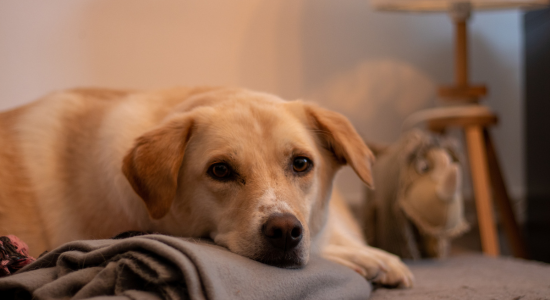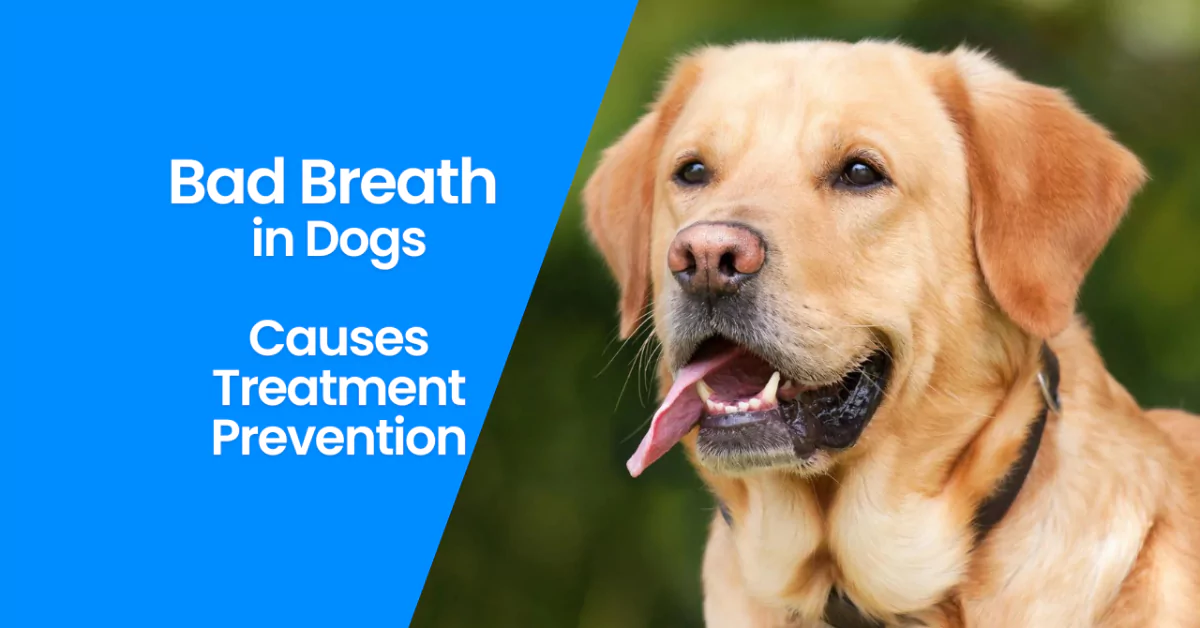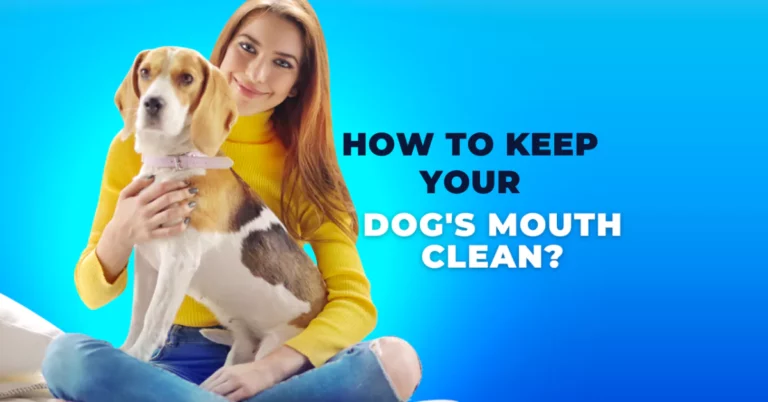Bad Breath in Dogs: Causes, Treatment, and Prevention
Bad breath in dogs is unpleasant for you and can also be a sign of serious health problems for your dog. If your dog’s breath smells bad, you should not ignore it or mask it with mints or sprays. Instead, you should find out the root cause of the problem and treat it accordingly.
Also Read: Signs of a Dog Ear Infection
Causes of Bad Dog Breath

Your dog may have bad breath for many reasons, ranging from mild to severe.
Some of the most common causes are:
Oral Hygiene and Periodontal Disease
Poor oral hygiene and periodontal disease are common causes of bad breath in dogs. Just like in humans, the buildup of plaque and tartar on your dog’s teeth can lead to the growth of bacteria, resulting in bad breath.
If you do not regularly brush your dog’s teeth or have them professionally cleaned, then plaque and tartar can accumulate and cause inflammation, infection, tooth loss, and even pus formation. It can also lead to very bad breath.
Unpleasant Dietary Habits
Dogs can be gross. Sometimes their habits translate directly into bad breath. If your dog regularly gets into the garbage, eats decomposing animal remains, or snacks on cat poop, their bad breath could result from these activities.
Diabetes
If your dog’s bad breath has a sweet or fruity smell, you must make an appointment with your veterinarian as soon as possible. Sweet, fruity breath is a sign of diabetes, a serious but treatable condition affecting your dog’s ability to regulate blood sugar levels.
Kidney Disease
Another possible reason for bad breath in dogs is kidney disease. The kidneys function as the body’s filtration system, removing waste products from the blood. When the kidneys are damaged or fail to work properly, these waste products can build up in the blood and cause a foul-smelling breath that resembles ammonia or urine.
Liver Disease
Bad breath, yellowing of the skin or eyes (jaundice) in conjunction with weight loss, poor appetite, and vomiting may indicate that your dog’s liver may be affected. The liver acts as a filter for the body’s toxins and also produces bile for digestion.
When the liver is diseased or damaged, it can fail to perform these functions and cause toxins to accumulate in the blood and bile to back up into the stomach.
Also Read: Is Catnip Safe for Dogs? Effects & Benefits
When To See A Vet About Your Dog’s Bad Breath?
If your dog’s bad breath persists, consult your veterinarian immediately. Your vet will examine your dog’s mouth for any signs of dental or gum disease, such as redness, swelling, bleeding, loose teeth, or abscesses.
The vet will also perform blood and urine tests to check for any underlying conditions affecting your dog’s breath, such as diabetes, kidney disease, or liver disease. Depending on the diagnosis, your vet will recommend the best treatment for your dog’s bad breath.
Treating Bad Dog Breath
Dental Cleaning
This is a procedure where your vet will remove any plaque and tartar from your dog’s teeth under anesthesia and polish them to prevent future buildup. Your vet may also extract damaged or infected teeth that cannot be saved.
Medication
Your vet may prescribe antibiotics to treat any infection in your dog’s mouth or elsewhere in their body. They may also prescribe medication to manage underlying conditions affecting your dog’s breath, such as diabetes or kidney disease.
Diet Change
Your vet may suggest changing your dog’s diet to one more suitable for their condition. For example, if your dog has diabetes, they may need a low-carbohydrate, high-protein diet to help regulate their blood sugar levels.
If your dog has kidney disease, they may need a low-protein, low-phosphorus diet to reduce the strain on their kidneys.
Supplements
Your vet may recommend adding supplements to your dog’s diet to support their oral health and overall well-being. For example, probiotics can help balance the bacteria in your dog’s mouth and gut.
Also Read: Why Is My Cat Meowing So Much?
Preventing Bad Breath in Dogs
While some cases of bad breath in dogs require veterinary intervention, you can also do some things at home to help improve your dog’s breath and oral hygiene.
Here are some tips:
Brush Your Dog’s Teeth Regularly
The most effective way to stop plaque and tartar buildup and keep your dog’s breath fresh is to brush their teeth at least once daily. Don’t use human toothpaste, as it can contain toxic ingredients like xylitol or fluoride.
Start brushing your dog’s teeth when they are young, making it a positive and rewarding experience.
Provide Dental Chews and Toys
Another way to help keep your dog’s teeth clean and their breath fresh is to provide them with dental chews and toys designed to scrape off plaque and tartar as they chew.
Add Dental Water Additives
You can also add dental water additives or rinses to your dog’s drinking water or spray them on their teeth and gums to help reduce bacteria and plaque in their mouth. These products usually contain zinc or enzymes with antibacterial and anti-plaque properties.
However, these products are not a substitute for brushing your dog’s teeth or visiting your vet for dental care.
Check Your Dog’s Diet
Sometimes, the cause of bad breath in dogs can be related to their diet. If you feed your dog wet food, dry food, or a combination of both, choose high-quality products free of artificial colors, flavors, preservatives, or fillers that can affect your dog’s breath.
Avoid giving your dog foods that cause bad breath in humans, such as garlic, onions, cheese, or fish.
Also Read: Can Dogs Eat Potatoes?
Frequently Asked Questions (FAQs)
Are there home remedies to treat bad breath in dogs?
Some natural therapies can aid dogs with mild symptoms of foul breath:
- Baking soda: You can brush your dog’s teeth once a week with baking soda and water paste. Baking soda can help whiten teeth and dispel odors.
- Coconut oil: You can use it to wash your dog’s teeth or add a spoonful to their diet. Plaque and gingivitis can be lessened thanks to coconut oil’s antibacterial and anti-inflammatory characteristics.
- Apple cider vinegar: You can use it as a rinse after brushing your dog’s teeth or add a teaspoon to their water dish. The pH level in your dog’s mouth can be balanced with apple cider vinegar to stop bacterial growth.
- Parsley: You can chop some fresh parsley and sprinkle it on your dog’s food or make tea by boiling some parsley leaves in water and letting it cool down.
Can halitosis in dogs (bad breath) be cured?
Increasing dental hygiene or addressing the root can frequently cure canine halitosis. Consider a scenario where your dog has periodontal disease, the most typical cause of canine halitosis. Then, they might require a dental cleaning and the extraction of any decayed teeth.
Your dog may require medication and dietary adjustments to treat their condition if they have diabetes, kidney illness, or liver disease, which can result in halitosis. However, some cases of halitosis in dogs may be chronic or recurrent, especially if the cause is not identified properly.
What can you give a dog for halitosis?
Various products on the market can help with doggie breath, such as toothbrushes and paste, treats, drops, water additives, and rinses. These products usually contain antibacterial, anti-plaque, or odor-neutralizing ingredients, such as chlorhexidine, zinc, enzymes, baking soda, coconut oil, or apple cider vinegar.
However, these products are not a substitute for brushing your dog’s teeth or visiting your vet for dental care. They should be part of a regular oral hygiene routine that includes brushing your dog’s teeth daily, providing dental chews and toys, and checking your dog’s diet.
How do I know if my dog has halitosis?
The most obvious sign of halitosis in dogs is a foul-smelling breath that persists or worsens over time. You may also notice other signs of oral or systemic disease that may cause halitosis in dogs, such as:
- Loose or missing teeth
- Difficulty eating or chewing
- Drooling or pawing at the mouth
- Yellowing of the skin or eyes (jaundice)
- Weight loss, poor appetite, or vomiting
- Increased thirst, urination, appetite, or weight loss (diabetes)
If you notice any of these signs in your dog, you should take them to the vet for a thorough examination and diagnosis.
When should I take my dog to the vet for halitosis?
You should take your dog to the vet for halitosis if their bad breath persists. Your vet will examine your dog’s mouth for any signs of dental or gum disease and perform blood tests and urine tests to check for any underlying conditions that may affect your dog’s breath.
Depending on the diagnosis, your vet will recommend the best treatment for your dog’s halitosis and overall health.
Conclusion
Bad breath in dogs is unpleasant for you. To prevent and treat it, you should follow a regular oral hygiene routine that includes brushing your dog’s teeth daily, providing dental chews and toys, adding dental water additives or rinses, and checking your dog’s diet.
You should also take your dog to the vet for regular dental check-ups and cleanings and consult your vet if your dog’s bad breath is persistent or accompanied by other symptoms.
By taking good care of your dog’s oral health, you can not only prevent bad breath but also protect them from serious dental and systemic diseases affecting their quality of life.






